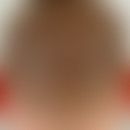Synonym(s)
HistoryThis section has been translated automatically.
DefinitionThis section has been translated automatically.
Superficial fibromatosis is a circumscribed, cushion-like, fibrotic thickening that is located on the stretching side above the finger (toe) joints.
You might also be interested in
EtiopathogenesisThis section has been translated automatically.
Fibromatosis of unknown etiology. Often in combination with other fibromatoses of the adult(Dupuytren's contracture, induratio penis plastica); not infrequently a tendency to keloid is observed.
S.a. the occurrence of idiopathic Knuckle Pads in:
- polyfibromatosis, see also Bart-Pumphrey syndrome
- Dupuytren's contracture
- Induratio penis plastica (Peyronie's disease)
- Palmoplantar keratoses
Some authors state an autosomal dominant inheritance.
ManifestationThis section has been translated automatically.
LocalizationThis section has been translated automatically.
ClinicThis section has been translated automatically.
Pea-size, flat raised, coarse, pad-like, skin-coloured or yellow-brown papules or plaques with a granular, bumpy, woolly surface.
HistologyThis section has been translated automatically.
Differential diagnosisThis section has been translated automatically.
fake knuckle pads: mechanically induced hyperkeratosis
TherapyThis section has been translated automatically.
Progression/forecastThis section has been translated automatically.
Note(s)This section has been translated automatically.
Fibromatoses are a heterogeneous group of new formations of connective tissue, which nosologically stand between reactive new formations and true neoplasias. Especially congenital forms and familial occurrence and the detection of mutations (see below fibromatosis, hyaline juvenile) speak, at least for some members of this group of diseases, for a genetic basis.
LiteratureThis section has been translated automatically.
- Chamberlain AJ et al (2003) Pachydermodactyly: a forme fruste of knuckle pads? Australas J Dermatol 44: 140-143
- Garrod AE (1893) On an unusual form of nodule upon joints of the fingers. St Bartholomew's Hosp Rep 29: 157-161
Hayashi M et al (2012) Case of epidermolytic palmoplantar keratoderma with knuckle pads. J Dermatol 39:84-87
Hyman CH et al (2013) Report of a family with idiopathic knuckle pads and review of idiopathic and disease-associated knuckle pads. Dermatol Online J 19:18177
Lin Z, Zhao J et al (2015) Loss-of-function mutations in CAST Cause Peeling Skin, Leukonychia, Acral Punctate Keratoses, Cheilitis, and Knuckle Pads. On J Hum Genet 96:440-447
Incoming links (6)
Ankle pads, real; Bart-pumphrey syndrome; Fibrokeratome acquired digital; Knuckle pads; Polyfibromatosis; Tylositates articuli;Outgoing links (19)
Acanthosis; Bart-pumphrey syndrome; Callus (overview); Dermis; Dupuytren's contracture; Fibroma; Fibromatoses (overview); Fibromatosis hyaline juvenile; Hyperkeratoses; Keratosis palmoplantaris transgrediens et progrediens with mutations in slurp1; ... Show allDisclaimer
Please ask your physician for a reliable diagnosis. This website is only meant as a reference.







